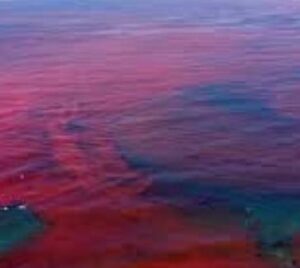It’s not surprising to learn of a new study that found that human activity contributes to naturally occurring Red Tide, giving some credence to what some have suspected.
The study, which was published in the Journal Science of the Total Environment, included the combined efforts of researchers from the University of Florida, SCCF, and Sarasota Bay Estuary Program. They found that “while a combination of factors contributes to red tide blooms, human activity has played a consistent role in intensifying them during the past decade.”
How does this happen? It’s caused by nitrogen coming from the Caloosahatchee, Lake O and surrounding areas that fuels blooms. According to SCCF’s Marine Lab Director Eric Milbrandt, “There has been an assumption that nutrient runoff from agriculture, fertilizer, and septic systems are used by the dinoflagellate that causes red tide blooms. There is now another piece of evidence linking red tide bloom intensity to these human activities and nitrogen sources specifically.”
Christine Angelini, director of the Center for Coastal Solutions points out that “It’s important not to jump to conclusions and immediately assign ‘blame’ for red tide events to a particular land use because other factors play a role as to the level of impact human activity will have. Red tide blooms are complex and there are many factors that contribute to them.”
One of the co authors of the paper indicated that for over a decade the state of Florida has acknowledged that nitrogen loads from the Caloosahatchee River are too high and that this research supports the implementation of strategies outlined by the state which will improve water clarity and seagrass but likely reduce the impact on red tide.
This study is just the beginning in looking at how the actions of humans affect red tide.

